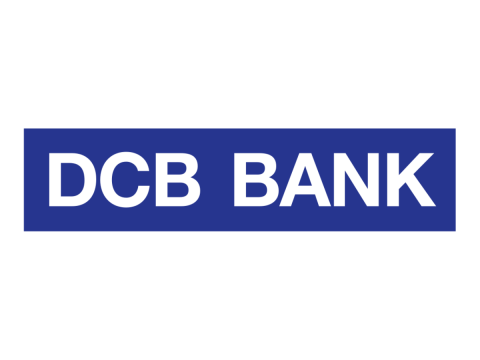DCB Bank Share Price Target at Rs 175: ICICI Securities
ICICI Securities maintains its BUY recommendation on DCB Bank, setting a target price of Rs 175—implying a 22% upside from the current market price of Rs 143. The latest ICICI Securities report underscores a strategic pivot towards customer-centricity, robust loan growth, and operational recalibration, while candidly addressing the persistent overhang of elevated slippages and net NPAs. Despite a post-pandemic de-rating, DCB’s fundamentals remain resilient, with projections of improving return ratios and operating leverage. Investors should note the key technical levels, risk factors, and the bank’s differentiated approach in a competitive landscape.
ICICI Securities Endorses DCB Bank: BUY Call and Target Levels
ICICI Securities, a leading institutional research house, has reaffirmed its BUY stance on DCB Bank, pegging a 12-month target price at Rs 175 per share, representing a potential 22% upside from the current market price of Rs 143. The report values the stock at approximately 0.8x FY27E Adjusted Book Value (ABV), highlighting a compelling risk-reward profile at current valuations.
Summary Table: Key Financial Metrics and Stock Levels
| Metric | FY24A | FY25A | FY26E | FY27E |
|---|---|---|---|---|
| Net Interest Income (Rs bn) | 19.3 | 21.1 | 23.6 | 29.0 |
| Net Profit (Rs bn) | 5.4 | 6.2 | 7.2 | 9.7 |
| EPS (Rs) | 17.2 | 19.6 | 22.8 | 31.0 |
| ABV (Rs) | 142.0 | 158.2 | 178.6 | 207.5 |
| P/ABV (x) | 1.0 | 0.9 | 0.8 | 0.7 |
| Return on Assets (%) | 0.9 | 0.9 | 0.9 | 1.0 |
| Return on Equity (%) | 11.8 | 12.1 | 12.5 | 14.9 |
Sharp De-Rating: Stock Trades at Pandemic-Era Valuations
DCB Bank’s stock has undergone a significant de-rating post-COVID-19, now trading at levels akin to the pandemic lows, despite a lack of material microfinance exposure. For context, the stock averaged a 2x forward book multiple pre-pandemic (2015–20), but has languished at around 0.8x in the past five years. This anomaly, especially when compared to peers who have re-rated, presents an attractive entry point for value-conscious investors.
Asset Quality: Elevated Slippages, but Credit Costs Well-Contained
Gross slippages surged to approximately 6% during FY22–23 and have moderated to 3% in FY25, yet remain above pre-pandemic norms. Importantly, much of this uptick is attributable to gold loan slippages, which typically see rapid recovery and minimal credit cost impact. Net NPA ratios have stabilized at 1.1% over the last three years, higher than the pre-pandemic 0.7–0.8%, but net slippages and credit costs have remained in a benign 0–0.8% range, with FY25 at 0.6%. The bank models net slippages of 0.6–0.7% and credit costs of 0.5% for FY26–27, indicating prudent risk management.
Loan Growth: Outpacing Peers with Consistency
DCB Bank has re-established its reputation as a high-growth lender, clocking a 25% YoY loan growth in FY25—among the fastest in the sector. The bank has delivered over 18% YoY loan growth for ten consecutive quarters, with a robust track record of doubling its loan book every 36–42 months outside the pandemic period. Co-lending has emerged as a pivotal growth lever, now constituting 13% of the loan book, up from 7% in FY24. Even excluding co-lending, loan growth remains a healthy 17% YoY. The management projects an 18% CAGR in loans over FY25–27.
Net Interest Margins: Navigating Rate Headwinds
Net Interest Margins (NIMs) contracted by 34bps YoY to 3.31% in FY25, with further pressure anticipated in FY26 due to the lead-lag effect of interest rates. The bank’s differentiated savings account strategy—offering rates from 1.5% to 7.25%—has supported deposit growth but elevated the cost of deposits. DCB is pivoting towards higher-yielding loan segments such as Loan Against Property (LAP) and working capital, and expects NIMs to rebound by FY27 as the rate cycle turns favorable.
Operational Efficiency: Investment Phase Nears Completion
DCB Bank’s aggressive branch and headcount expansion from FY21–25 has largely concluded, shifting the focus to extracting operating leverage. The cost-to-income ratio, which peaked at 64% in FY24, is forecast to improve to below 60% by FY27. The bank is already witnessing a surge in fee income, partly due to a reclassification of penal charges, and expects treasury gains and tight expense control to cushion any NII softness.
Profitability: Return Ratios Set to Improve
Despite NIM compression, DCB’s return on assets (RoA) is projected to remain stable at 0.9% for FY26, rising to 1% in FY27, driven by operating leverage and NIM recovery. Return on equity (RoE) is expected to climb from 12.1% in FY25 to 14.9% in FY27. The bank’s strategy to deepen customer relationships and cross-sell more efficiently is anticipated to further enhance profitability.
Balance Sheet Strength and Capital Position
Tier-1 capital adequacy stands at a healthy 14.3% as of FY25, with efficient capital consumption despite brisk loan growth. A proposed promoter infusion of USD 10 million is pending regulatory clearance, which, once completed, will further fortify the bank’s capital base. The management remains committed to maintaining a strong balance sheet and enhancing its capital buffer for future growth.
Key Risks and Technical Levels for Investors
Risks include slower-than-expected improvement in operating efficiencies and higher-than-anticipated NIM pressure. On the technical front, key support for DCB Bank is seen around Rs 135, with resistance at Rs 149. The stock’s attractive valuation—trading at 0.8x FY27E ABV—offers a favorable risk-reward for medium-term investors. The 52-week range is Rs 101–149, and the stock’s free float stands at 84%.
Medium Term Investment View: DCB Bank—A Contrarian Opportunity with Upside Potential
ICICI Securities’ reiteration of its BUY call on DCB Bank is underpinned by robust loan growth, a strategic shift towards customer-centricity, and the prospect of improving return ratios as operational leverage kicks in. While asset quality concerns linger, the bank’s contained credit costs and prudent underwriting provide comfort. Investors seeking a contrarian play in the Indian banking sector should closely watch DCB Bank as it navigates the next phase of its growth journey.
